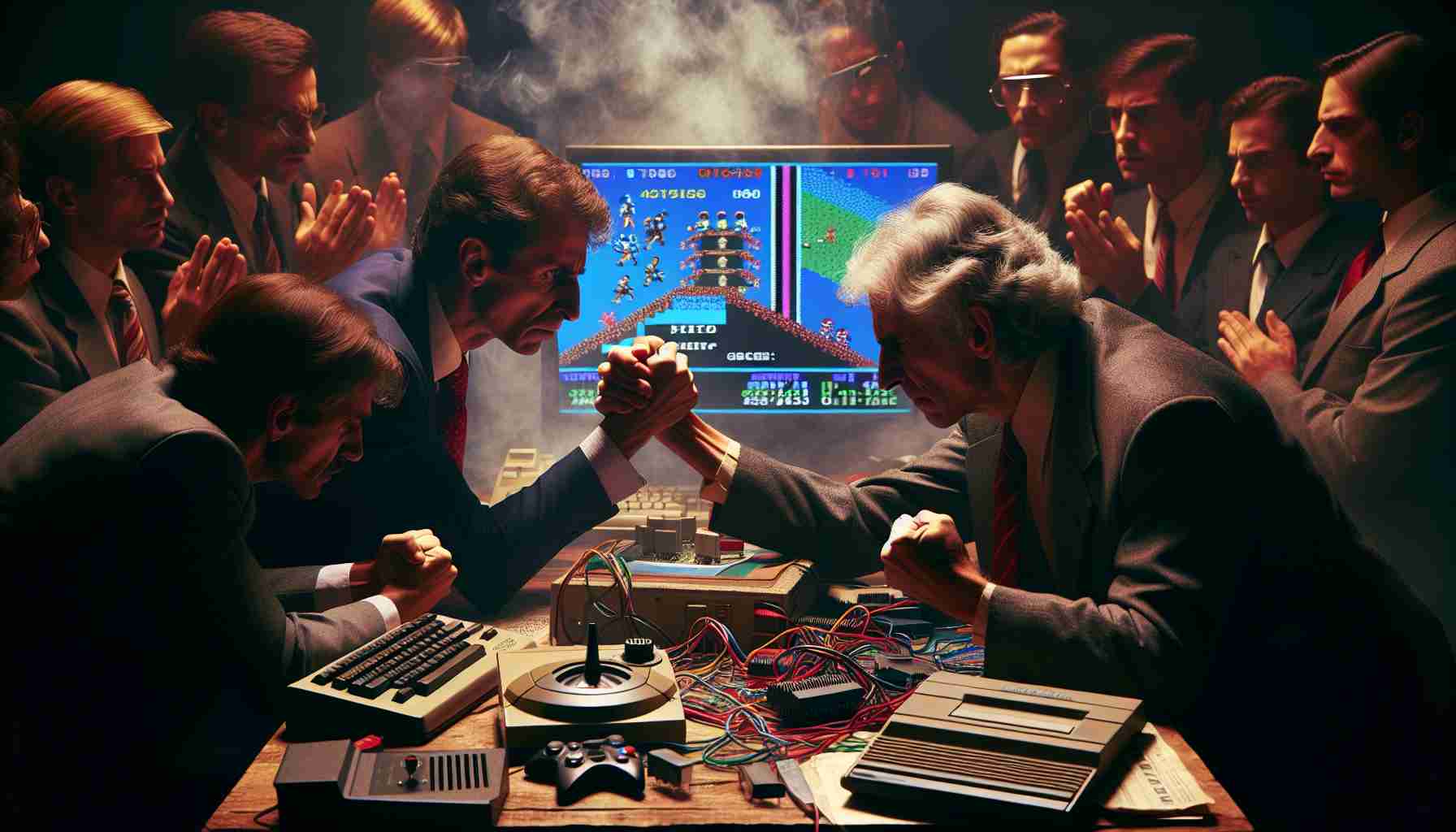- In the late 1970s, Mattel Electronics introduced the Intellivision console to challenge Atari’s dominance in the home video gaming market.
- Initially test-marketed in Fresno, California, the Intellivision offered a unique blend of education and entertainment.
- A sluggish start prompted Mattel to overhaul its marketing strategy under the leadership of Josh Denham and Frank O’Connell.
- Utilizing television advertising, Mattel launched a comparative campaign portraying Intellivision as superior to Atari.
- This strategic move, despite skepticism from Ogilvy & Mather, successfully elevated Intellivision’s presence in the market.
- The story of Intellivision highlights how bold marketing and innovation can challenge established giants in consumer technology.
The late 1970s marked a fierce battleground in the burgeoning world of home video gaming. Amid the echoes of clunky joysticks and 8-bit melodies, Mattel Electronics dared to take on the might of Atari with their brainchild: Intellivision. This wasn’t just a simple console; it was a glimpse into gaming’s future, painted with bold strokes and unconventional ideas.
Test-marketed in the modest city of Fresno, California, Intellivision initially found its footing in a handful of department stores, promising not just entertainment, but a novel home experience—a crossover of education and playful indulgence unmatched at the time. However, with the console’s sluggish start in the marketplace, the realization hit hard: simply being innovative wasn’t enough.
Mattel’s marketing prowess shifted gears under the guidance of the newly appointed Josh Denham and marketing savant Frank O’Connell. Understanding the colossal shadow of Atari, they decided to flip the script. By leveraging television—a powerful medium—they launched a bold comparative advertising strategy. This daring campaign portrayed Intellivision not merely as an alternative but as a superior force, ready to conquer living rooms nationwide.
Despite the lingering doubts from their ad agency, Ogilvy & Mather, the decision proved a masterstroke. Intellivision became a household name, riding the coattails of Atari’s established brand to rise to prominence. This battle showcased not only the relentless ingenuity behind Mattel’s marketing but also the unpredictable nature of consumer technology—a landscape where innovation and audacity could rewrite destinies.
As Mattel faced Atari in this pixelated duel, one truth became clear: in a world dominated by giants, courage or perhaps hubris can spark a revolution and tilt the scales of destiny.
Intellivision’s Bold Battle with Atari: The Untold Impact on Gaming’s Future
The late 1970s and early 1980s were a pivotal era in the realm of home video gaming, marked by intense competition and rapid technological advancements. Mattel Electronics’ introduction of the Intellivision console stretched the boundaries of consumer expectations, prompting significant developments in both technology and marketing strategies. Here, we explore additional verified information that highlights the broader impact of this iconic clash between Intellivision and Atari, influencing not just the gaming industry, but also technology and consumer behavior on a global scale.
Enhanced Technological Advancements
1. Graphics and Sound Innovations:
– Intellivision’s graphics were more advanced than those of Atari’s consoles at the time. The console boasted a 16-bit processor, which was significant as most competitors were operating on 8-bit systems.
– It was among the first to offer downloadable content through the PlayCable service, which allowed users to access new games via their cable television line, a precursor to modern-day downloadable games.
2. Strategic Peripheral Additions:
– Intellivision introduced several peripherals, including a keyboard attachment that turned the console into a home computer system. This not only broadened the console’s scope beyond gaming but also hinted at the future of multifunctional gaming devices.
Global Impact on Gaming Cultures
– International Market Penetration:
– The success of Intellivision and similar systems popularized video gaming across the globe, establishing a foundation for today’s multi-billion-dollar industry. Its reach extended beyond North America to Europe and other regions, fostering a shared global gaming culture.
– Cultural Influence:
– With increased international distribution, Intellivision helped influence cultural and social perceptions of technology, introducing concepts of digital entertainment and interactive media to households worldwide.
Economic and Social Impacts
1. Influences on Marketing Practices:
– Intellivision’s marketing strategies, particularly their use of comparative advertising against Atari, set new standards and practices in consumer electronics advertising. Today, comparison advertising is a staple strategy in highly competitive markets.
2. Economic Growth in the Gaming Sector:
– The fierce competition between Mattel and Atari resulted in significant investment and innovation in the sector. This rivalry spurred faster advancements in technology and content, laying the groundwork for the robust gaming economies we see today.
Answering Pertinent Questions
– How did Intellivision change the video gaming industry?
– By pushing technological boundaries with its advanced graphics and interactive features, Intellivision set a higher standard for gaming consoles, challenging competitors to innovate further and rapidly advancing the industry.
– What long-term effects did Intellivision’s success have on consumer technology?
– Intellivision paved the way for multifunctional devices, blending gaming with other aspects of technology. It prefigured developments that would lead to modern gaming systems, which integrate internet connectivity, apps, and streaming services.
Suggested Related Links
In conclusion, Intellivision’s battle against Atari was not just a simple rivalry but a significant milestone that influenced global gaming trends, technological innovation, and marketing practices. It demonstrated how courage and strategic vision could redefine an industry and shape consumer expectations for generations to come.
